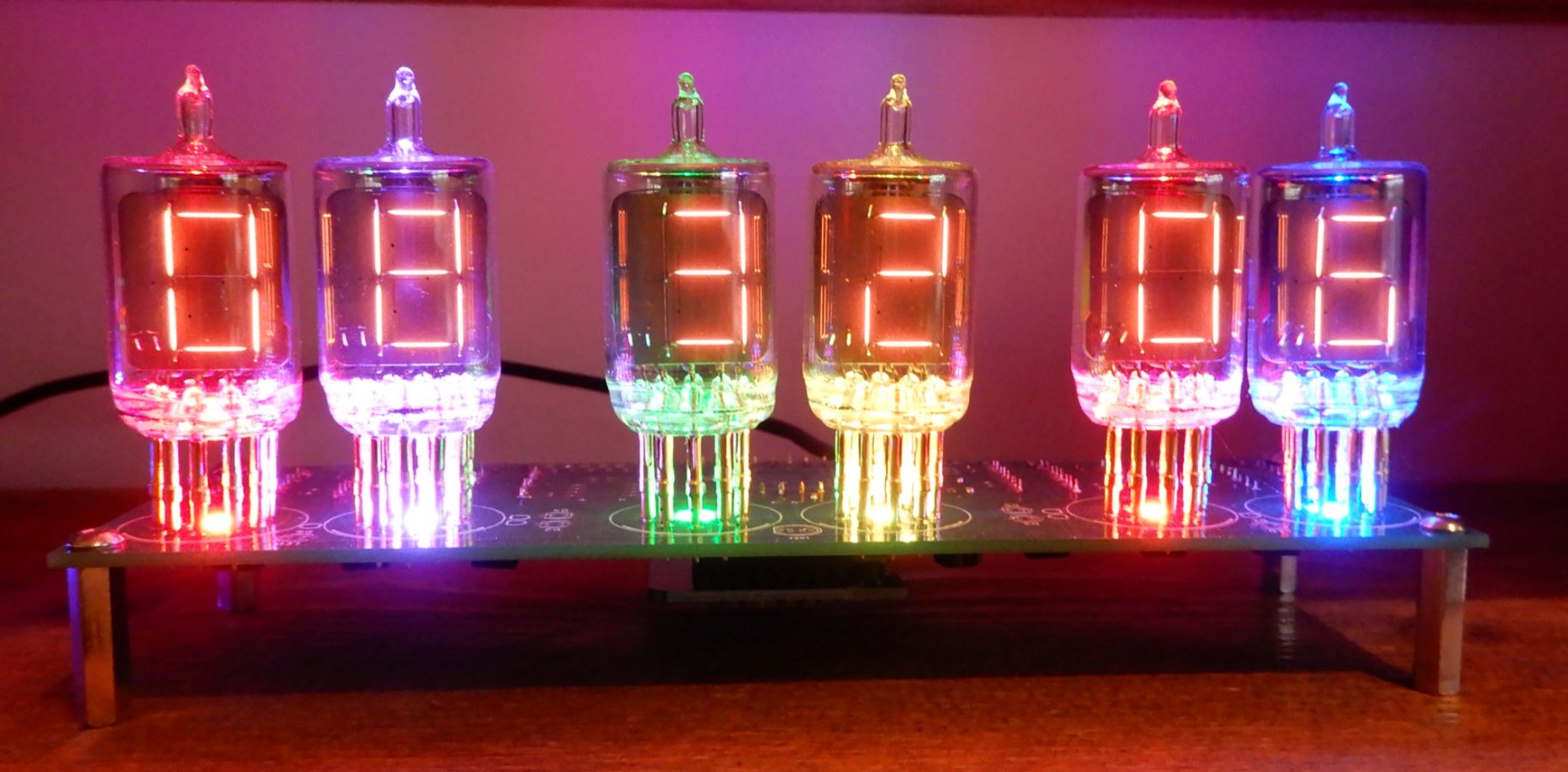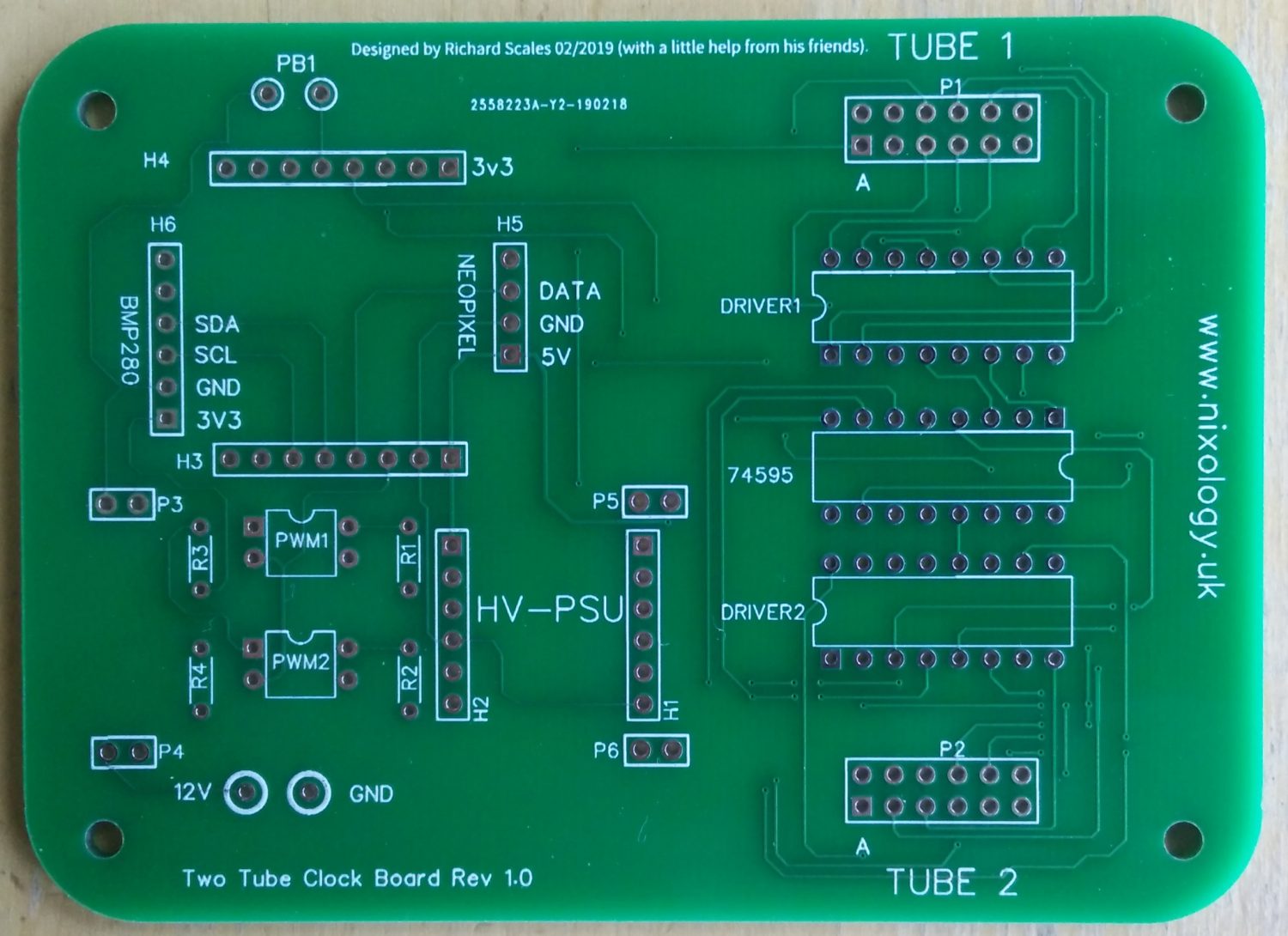
No Bareboards!
There are a variety of stunning case options available that will show off your clock to a very high level. Options include Plexiglass of various colours, a number of different machined and coated aluminium designs and for the Spectrum clocks, a highly polished stainless steel design which reflects the tube light to create an eye catching display.
But for those with particular skills in wood, plastic or metalwork and a little imagination – the options for custom case designs are unlimited.
There is also a trend in repurposing old equipment to house Nixie tube clocks, here are some which I have produced:
Judy Clock
This was built into a case that was very kindly provided by our good friend Judy. Originally it housed a single meter and we are unsure as to what it might have been used for, well metering I suppose! Now it houses a Classic Rev 5 with WiFi from nixieclock.biz and drives four IN-8’s (which are held in place using sockets from Nocrotec which I modified to take a larger LED) and a couple of ZM1020’s (I think) from which I removed the red coating. Additionally there is an Arduino Nano who’s sole purpose is to drive the meter in a true sinusoidal movement to look like a pendulum. The Classic Rev 5 with WiFi ensures that clock accuracy is maintained by synchronising with Network Time Protocol (NTP) time.
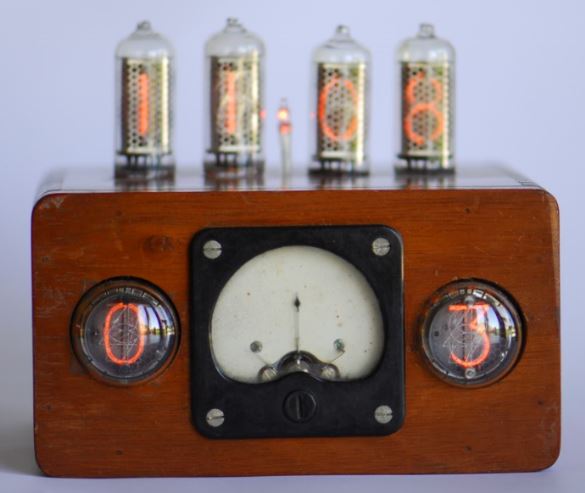
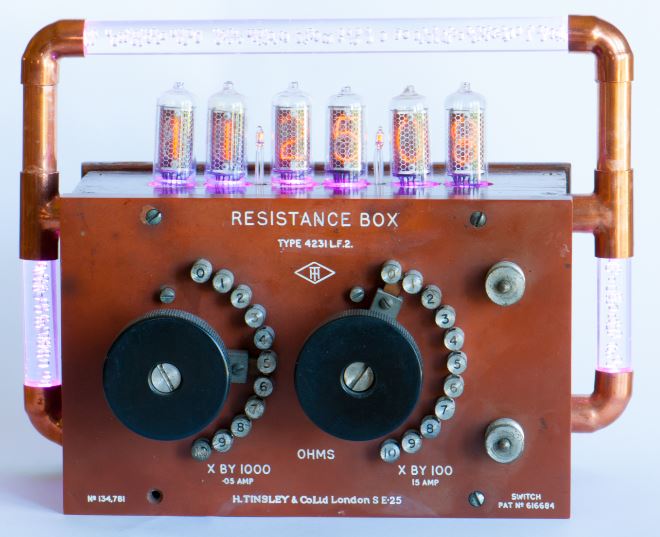
Resistance Clock #1 – Bubble Lights
This was actually my first attempt at repurposing something. Based on a Tinsley Resistance Box it houses a PV Electronics QTC as well as an Arduino Nano to control all the lighting. At each end of each piece of bubble tube here are two LED’s.
One is driven by the onboard clock LED circuit, the other is driven by the Arduino. Selecting different combinations of numbers on the resistance dials selects between the original clock lighting and a variety of over the top lighting effects for the tube lights. Time is synchronised with the GPS signal by using a PV Electronics XTerna transmitter and receiver.
Resistance Clock #2 – Plumbing
Based on a much larger Tinsley resistance box, this one features a PV Electronics Spectrum 1040 board which I modified to connect to ‘remote’ tubes. Currently sporting a set of Z566M nixies which are mounted on the end of brass plumbing fittings (Thanks to Pete Dew for the mounting tip). Originally I had planned to fit an FM Radio and speakers inside which was to be controlled by the Resistance dials though I understand that the clocks generate significant interference so that part is on hold at present. There is a WeMos D1 Mini pro connected directly to the clock board so the clock is synchronised with an NTP source.
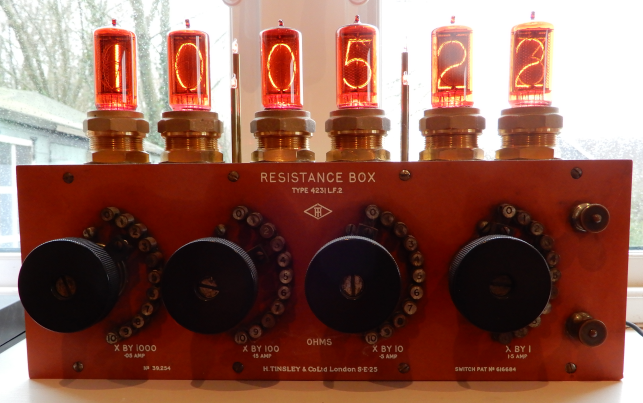
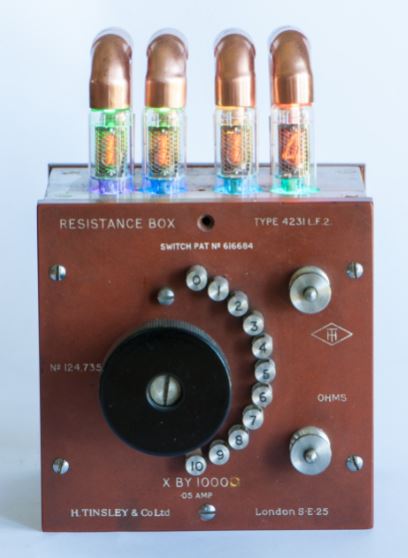
Resistance Clock #3 – Rainbow Lighting
I couldn’t resist another resistance box project. This one was a bit of a challenge as space was limited. Ultimately I fitted a PV Electronics Quattro kit driving four ZM5700 tubes. Even then I had to cut slots inside the case as the board was still slightly wider than the available space.
I also made the holes in the centre of the tube mounting areas larger to accommodate the larger WS2811 LED’s that I wanted to use in place of the single colour ones driven by the clock. An Arduino Nano controls the lighting, options are available by turning the resistance selector but this is usually left displaying a slowly changing rainbow effect. The Arduino monitors the original supply voltage for what would have been the onboard LED’s so it knows to switch off the lighting effects at night! The Nixie Tubes are illuminated from both ends. The copper is all from standard plumbing parts (I know nothing about plumbing!).
Solid Wood Clock – Machined from a solid block of wood
I wanted to carve a clock out of a single block of wood – so I bought a router. I learnt so much during this build. The main thing being that there are far better ways to remove all that wood from the inside than using a router (Forstner bits – that’s all I’m saying). However, I got there eventually and now it houses another QTC from PV Electronics and has a set of Mullard ZM1177 Nixies. I particularly like the fine horizontal anode ‘mesh’ on these and the ZM1210’s from Telefunken. Time Sync is provided by a PV Electronics Xterna transmitter / receiver.
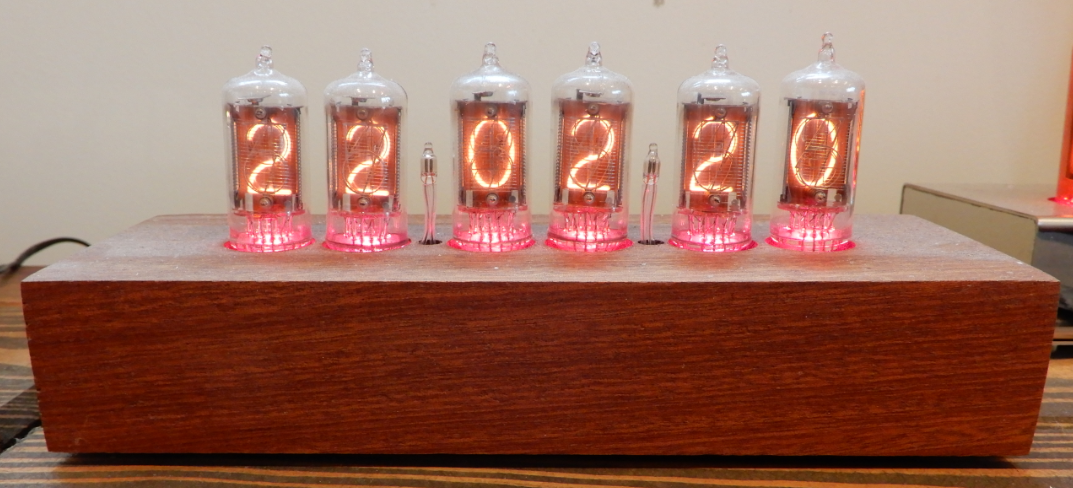
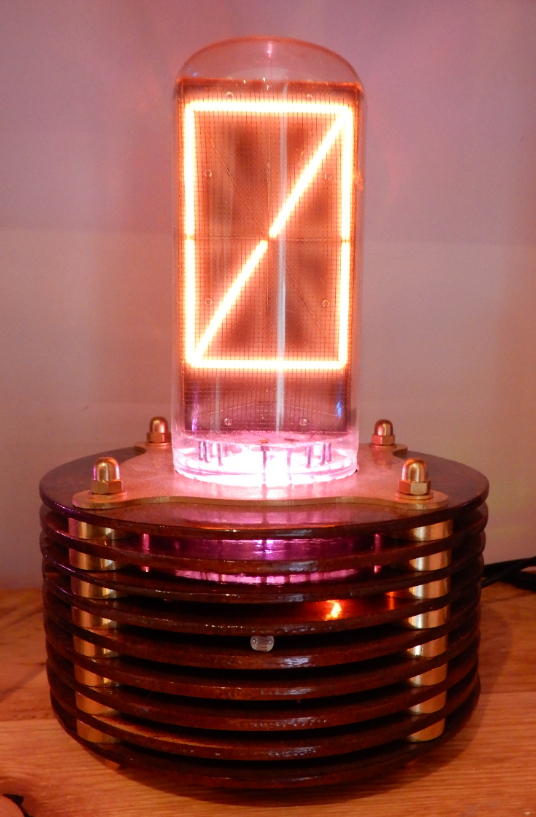
B-7971 Single Tube Clock
Inspired by a design from Roddy Scott, I decided to house this single Nixie clock in a similarly constructed case. It consists of a number of wooden rings (all of which were cut out on my router from wood that was reclaimed from a wooden blind) which are separated by brass ‘washers’ – each washer was cut from 18mm brass bar to a thickness of 4mm with a 4mm hole in the centre.
The whole lot stacks up and is topped off with a brass plate that was made for me at Engraving Studios (excellent suppliers of custom cut brass). Inside, the single tube clock electronics is from Paul Andrews and it drives a Burroughs B-7971 tube which actually consists of 14 individually addressable elements which allows it to display letters as well as numbers. The clock connects to WiFi for NTP Sync and configuration. Most excellent electronics. I plan to make another of these using an IN-18 tube.
Laminated Wooden Case
Keen to further utilise my router I came up with a method of building a case using 3mm thick sections that I had cut out on the router. I came up with a simple design that consisted of a top section (which would hold another brass plate), middle sections which make up most of the clock and base sections which maintain the laminated look whilst allowing the bottom of the clock to be concealed inside and out of view! the electronics is provided by an Elite clock from PV Electronics. This provides direct drive for the Nixies as well as features of the larger Spectrum clocks like PIR activation which can help prolong tube life. I used National NL-821’s for this clock, quite a large digit in a relatively compact envelope.
Again, I learnt a lot building this clock. One particular triumph was the move to using acrylic varnish which goes on well and dries quickly. I found it much easier to use than the traditional varnish that I used on the B-7971 Single Tube Clock design. I scaled this approach up for a build of a Spectrum 568 from PV Electronics.
The Spectrum 568 case was too big for me to machine on my router (perhaps I should have got a bigger router) so instead I elected to have the parts laser cut. This worked extremely well though it wasn’t cheap. In order to make best possible use of the wood I actually managed to squeeze an Elite case and two single tube IN-18 clock cases from the parts taken out of the larger pieces for the Spectrum clock, this reduced the price per case and made me feel slightly less bad!
For the Spectrum 568 clock, Dalibor Farney provided tubes with Titanium Nitride coating on the metal bases and the brass plates were supplied by engravingstudios.co.uk. Roddy Scott also provided some really nice switch and socket mounts for the back.
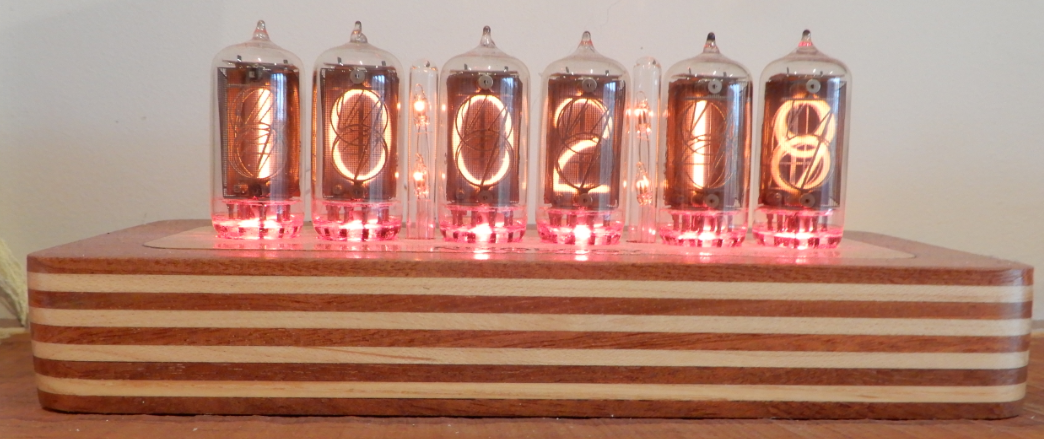
Laminated Case featuring PV Electronics Elite clock and NL-821 tubes
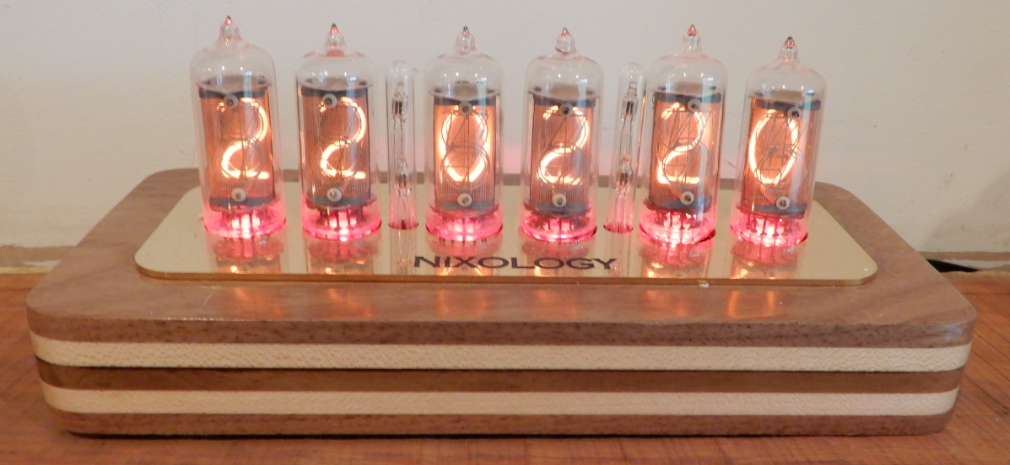
Laminated Case featuring PV Electronics Elite clock and fine-mesh IN-8’s
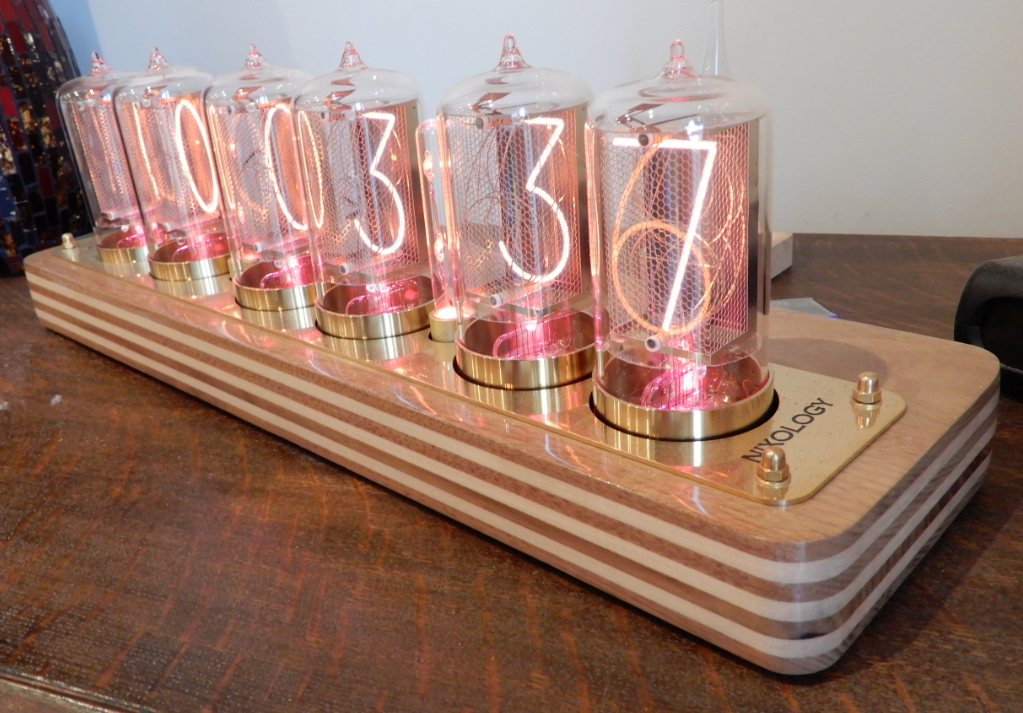
Laminated Case featuring PV Electronics Spectrum 568 and tubes from Dalibor Farny with Titanium Nitride coated bases.
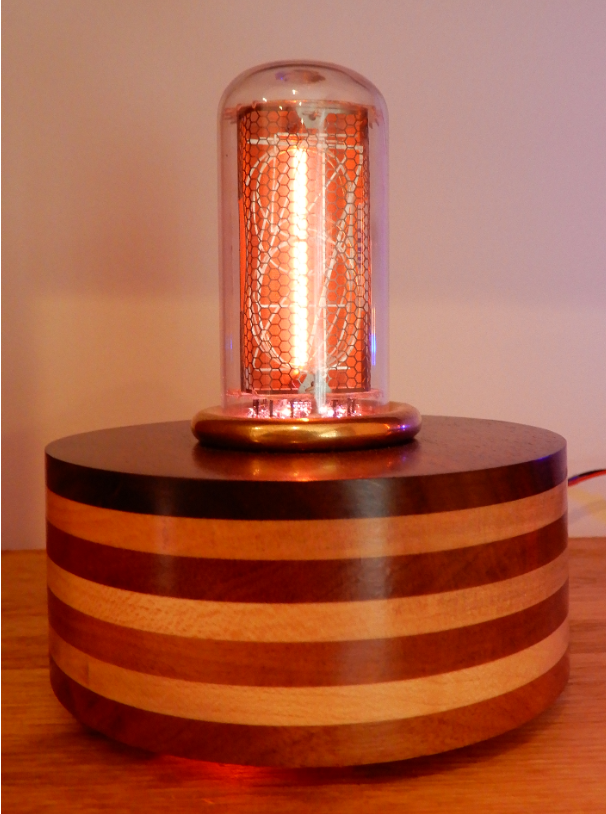
Laminated Case featuring Single Tube Clock electronics from Paul Andrews
and a Russian IN-18 tube
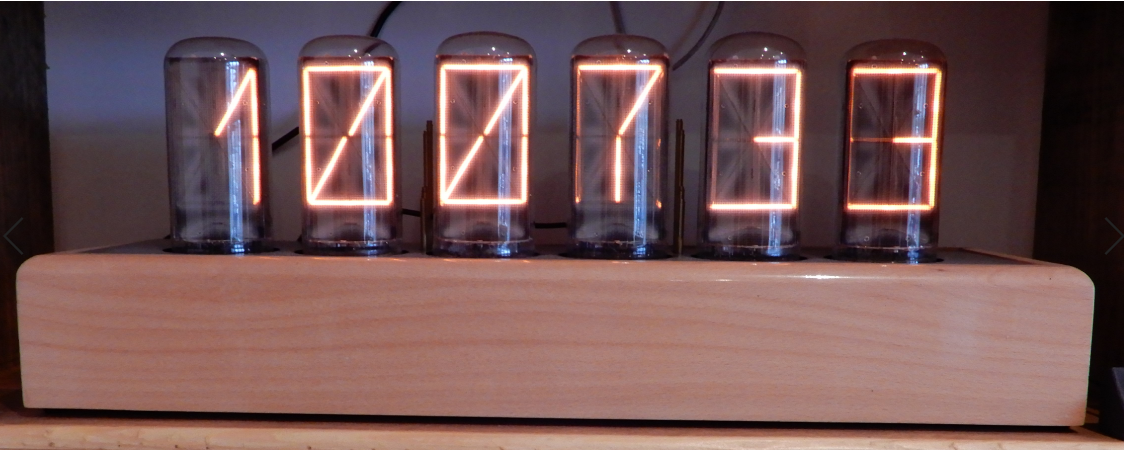
B-7971 Smart Socket Clock
A beech wood and perspex housing for a smart socket based B-7971 clock featuring Frankontroller
ZM1350 Smart Socket Clock
A Cherry wood and perspex housing for the ZM1350 smart socket based clock featuring Frankontroller II

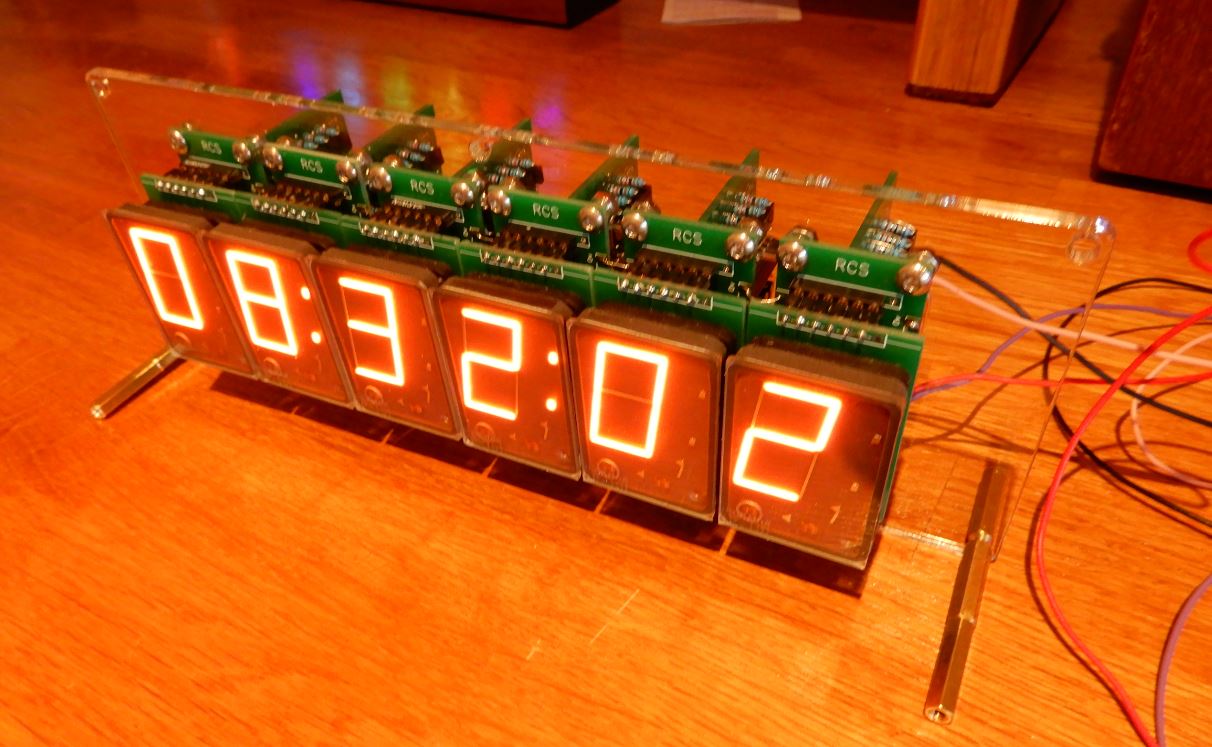
SP-101 Smart Socket Clock
A perspex contstruction to house and show off the Beckman SP-101 Planar Displays together with the smart socket boards and Frankontroller III.
Seen here without the case or controller – the case is designed but I need to check final dimensions now that I have built the controller board.
Numitrons
Not quite Nixie, here is the bare board from one of Ian Sparkes Numitron clock kits – I am still wondering how to case this one.
